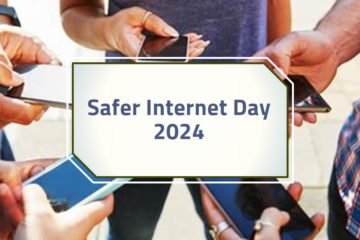Written for Highland News & Media by Robbie Ross.
Listen to this article
Cyber-attacks can result in significant financial loss, damage to a company’s reputation, and loss of sensitive data. And with an ever-moving workforce relying on business-critical technology, companies need to stay vigilant and invest carefully to stay cyber secure.
However, although it is common knowledge that businesses must ensure they have adequate cyber security measures in place to defend themselves against cyber threats, they may lack the knowledge when it comes to choosing the right protective technology.
In this article, we will explore the key cyber security technologies that every business needs to keep itself cyber secure.
Firewalls
Firewalls are one of the most basic and essential cyber security technologies. They act as a barrier between a company’s internal network and the outside world, preventing unauthorized access to the network. Firewalls analyse incoming traffic and block any traffic that does not meet specific security criteria. Firewalls can be implemented as hardware or software, and there are several types of firewalls available, including packet filtering firewalls, stateful inspection firewalls, and next-generation firewalls.
Antivirus and Anti-Malware Software
Antivirus and anti-malware software are designed to detect, prevent, and remove malicious software, such as viruses, worms, and trojan horses. These malicious programs can be used to steal sensitive data, damage files, and even take control of a computer system. Antivirus and anti-malware software work by scanning a computer system for suspicious activity and blocking any malicious programs from running. It is essential to keep antivirus and anti-malware software up to date to ensure they can detect and protect against the latest threats.
Encryption Technologies
Encryption technologies are used to protect data from being accessed by unauthorized users. Encryption works by converting plain text into a code that can only be deciphered by someone with the right encryption key. This means that even if a hacker were to gain access to encrypted data, they would not be able to read it without the encryption key. Encryption technologies are particularly important for protecting sensitive data, such as credit card information, social security numbers, and confidential business information.
Two-Factor Authentication
Two-factor authentication (2FA) is a security process that requires two forms of identification to access a system or application. This typically involves something the user knows, such as a username and password, and something they have, such as a mobile phone or security token. 2FA adds an extra layer of security to the login process, making it more difficult for hackers to gain unauthorised access to a system. It is recommended that all businesses implement 2FA for their most sensitive systems and applications.
Intrusion Detection and Prevention Systems
Intrusion detection and prevention systems (IDPS) are designed to detect and prevent unauthorised access to a computer system. IDPS use a range of techniques, such as signature-based detection and behavioural analysis, to identify and block malicious activity. IDPS can be configured to alert security teams when suspicious activity is detected or automatically block traffic that meets certain criteria.
Security Information and Event Management
Security Information and Event Management (SIEM) systems are used to monitor and analyse security-related data from various sources, such as firewalls, intrusion detection systems, and antivirus software. SIEM systems can provide real-time alerts when security incidents occur, allowing security teams to quickly respond to and resolve security threats. SIEM systems also provide valuable insights into security incidents and can help businesses identify areas where they need to improve their security posture.
Tech that protects
A robust cyber security plan addresses key areas, and alongside regular staff training, and clear processes and procedures, getting the technology right is fundamental. By utilising the technological safeguards mentioned your business will have the controls in place to prevent, detect and respond to cyber threats, have increased security, better compliance, and reduced risk. Note that this list is not exhaustive, and you’ll need to decide what is required, and appropriate for your company.
One last note of advice is that not all technology is created equal, so opt for market leading products and check out their reviews. There’s plenty information out there.
If you have an IT provider, I would strongly recommend you contact them to check what current defences are in place and to confirm that there aren’t other technologies available that could improve your security posture.
If reading this article has raised further questions relating to your own business, please get in-touch, I’d be happy to provide some guidance.

